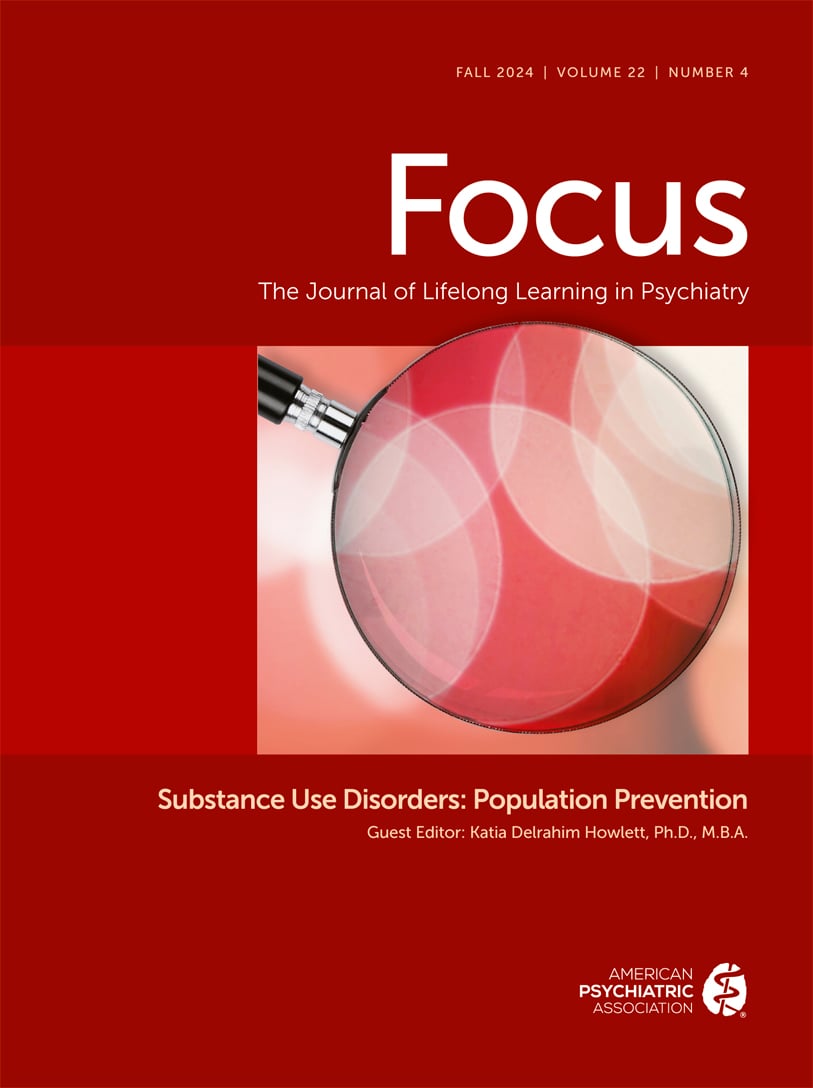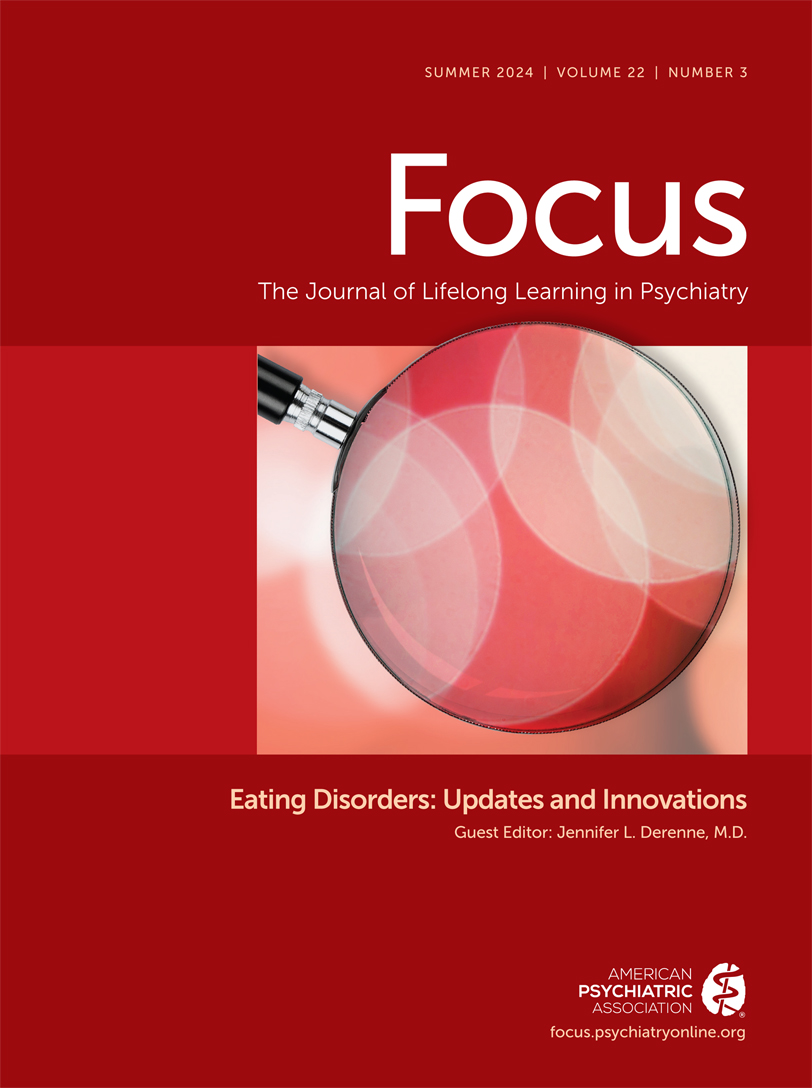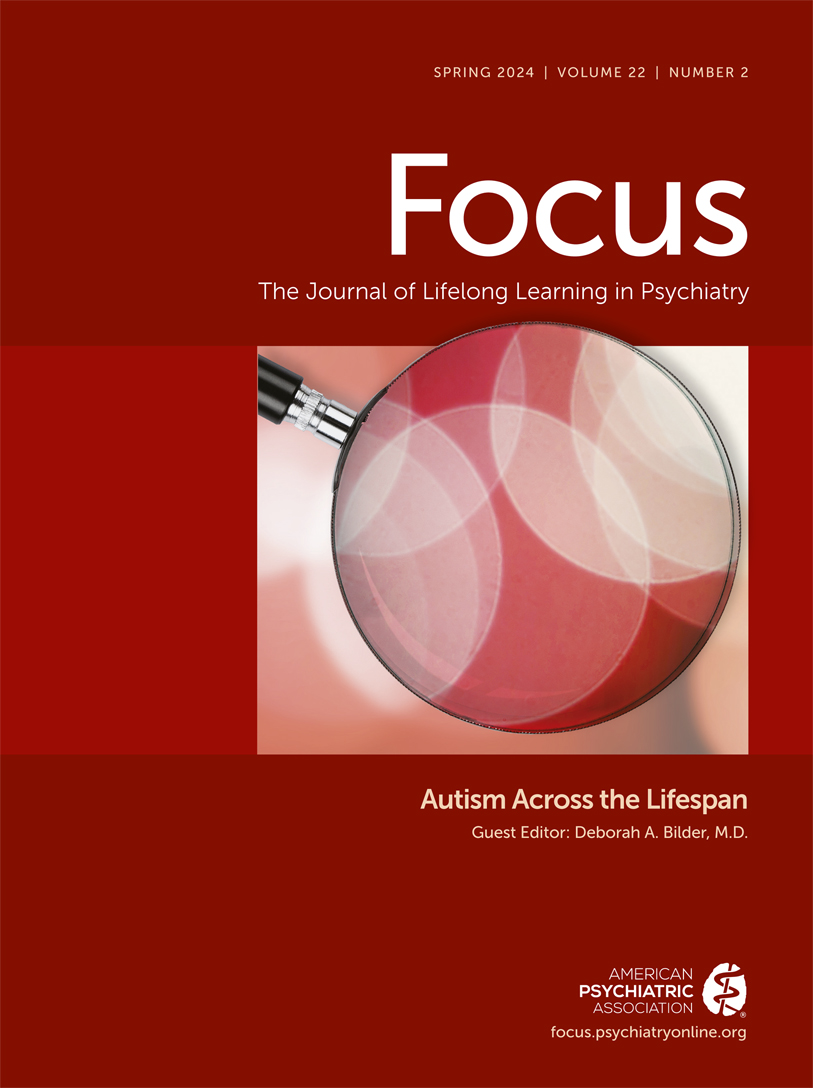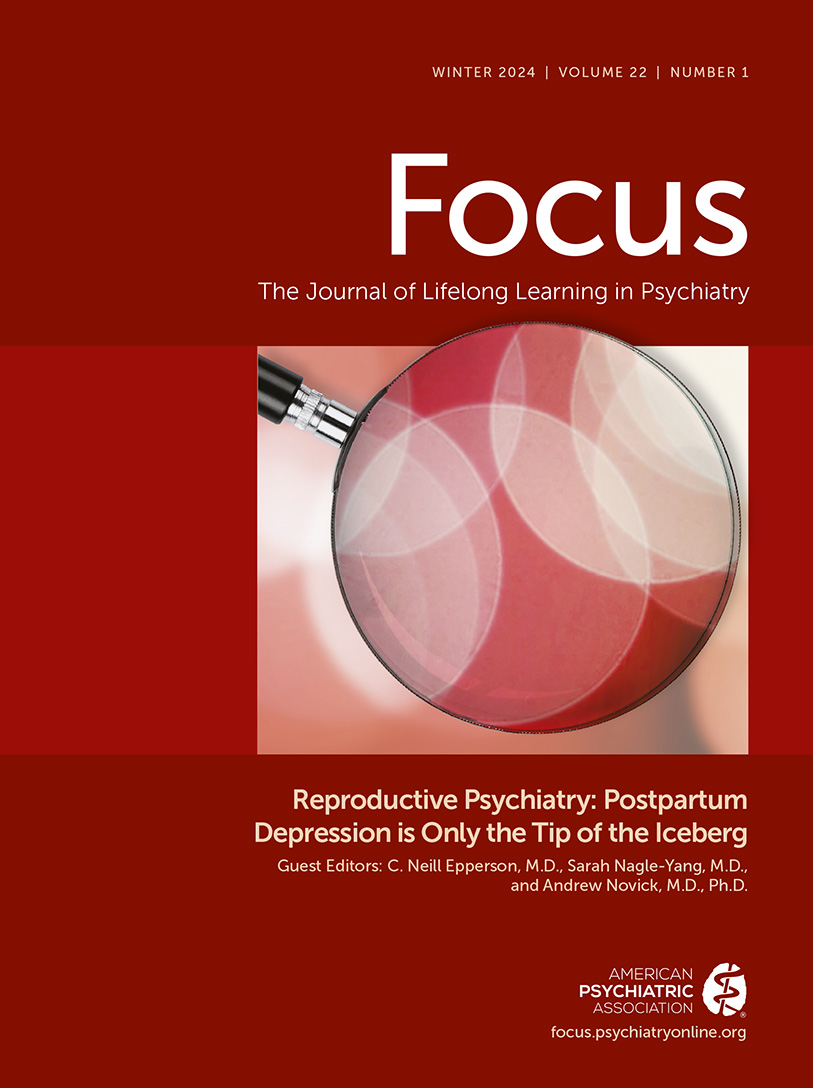Focus
- Volume 6
- Number 2
- April 2008
From the Guest Editors
CLINICAL SYNTHESIS
Publication date: 01 April 2008
Pages167–171The management of new-onset schizophrenia represents an enormous challenge and opportunity. The evaluation and treatment decisions that are implemented at this phase of illness can have an important impact on subsequent course and outcome. It is important ...
https://doi.org/10.1176/foc.6.2.foc167Publication date: 01 April 2008
Pages172–179People with schizophrenia die prematurely from comorbid physical diseases, particularly from cardiometabolic disturbances. Although some host vulnerability exists, there is also mounting evidence of a relationship between metabolic disturbances and ...
https://doi.org/10.1176/foc.6.2.foc172Publication date: 01 April 2008
Pages180–183Recent attention has focused on the limitations of current antipsychotic medications for improving community functioning in schizophrenia. The strong relationship between neurocognition and functional outcome has led to a focus on developing ...
https://doi.org/10.1176/foc.6.2.foc180INFLUENTIAL PUBLICATIONS
Publication date: 01 April 2008
Pages197–199This section contains a compilation of recent publications that have shaped the thinking in the field as well as classic works that remain important to the subject reviewed in this issue. This bibliography has been compiled by experts in the field and ...
https://doi.org/10.1176/foc.6.2.foc197Publication date: 01 April 2008
Pages205–211(Reprinted with permission from the Schizophrenia Bulletin 2007; 33(5):1093–1099)
https://doi.org/10.1176/foc.6.2.foc205Publication date: 01 April 2008
Pages212–220Objective: This study compared patients with schizophrenia whose antipsychotic medications were switched to manage treatment-resistant positive psychotic symptoms with those for whom another antipsychotic was added. Psychiatrists' characteristics and ...
https://doi.org/10.1176/foc.6.2.foc212Publication date: 01 April 2008
Pages221–233(Reprinted with permission from the Schizophrenia Bulletin 2007; 3(1):21–32)
https://doi.org/10.1176/foc.6.2.foc221Publication date: 01 April 2008
Pages234–238Purpose of review Sexual dysfunctions have been described as being common in schizophrenia patients. The pathophysiology behind their development remains unclear. They can be secondary to the disease itself or an adverse event of antipsychotic medication. ...
https://doi.org/10.1176/foc.6.2.foc234Publication date: 01 April 2008
Pages239–245Objectives: This study examined mortality and medical comorbidity among patients with serious mental illness in Ohio. Methods: Data for 20,018 patients admitted to an Ohio public mental health hospital between 1998 and 2002 were matched against state death ...
https://doi.org/10.1176/foc.6.2.foc239Publication date: 01 April 2008
Pages246–253“Mr. P,” a 40-year-old unmarried man, sought treatment after a move to live closer to his sister. He had attended a first-rate university and worked as a legal researcher before suffering a psychotic episode in 1994 as a first-year law student at age 28. ...
https://doi.org/10.1176/foc.6.2.foc246Publication date: 01 April 2008
Pages254–256(Reprinted with permission from the Schizophrenia Bulletin 2006; 32(2):200–202)
https://doi.org/10.1176/foc.6.2.foc254Publication date: 01 April 2008
Pages257–266Objective: A growing body of evidence supports the use of cognitive behavior therapy for the treatment of schizophrenia. A course of cognitive behavior therapy, added to the antipsychotic regimen, is now considered to be an appropriate standard of care in ...
https://doi.org/10.1176/foc.6.2.foc257Past Issues
View Issues Archive
Vol. 22 | No. 4

Vol. 22 | No. 3

Vol. 22 | No. 2
